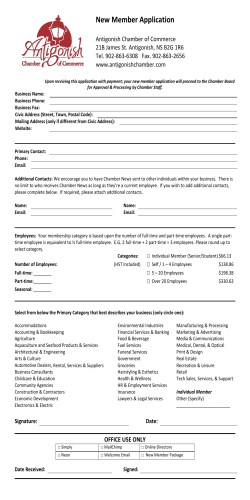
Factors Affecting Blood Flow Notes
Cardiovascular System Notes---Including the heart Describe the factors affecting blood flow through the cardiovascular system (Includes blood pressure, blood volume, resistance, blood viscosity, disease, and exercise **Diabetes (disease) is one of the many medical conditions that slow down blood flow. In diabetes, there is an elevated level of sugar in the blood. This increase in glucose causes the blood to be viscous or thicker causing the flow to decrease. **Obstruction in blood vessels cause resistance: Blood flow is also altered when the pathway for blood flow in the blood vessels is blocked. Atherosclerosis (disease) is an example of this factor causing slower blood flow. Atherosclerosis occurs when plaques form on the walls of the blood vessels (See diagram below). To illustrate, the blood vessel can be likened to a water pipe. Without any obstruction, the water flows smoothly without any interruption. However, if an object sticks to the walls of the pipe, the overall diameter of the pathway is reduced due to the blockage causing the water flow to slow down. This is what happens in atherosclerosis in which fats build up on the walls of the blood vessels causing obstruction of blood flow. **There are different factors that affect blood flow in different parts of the body. Blood flow can be affected by the composition of the blood itself (i.e. concentration of solutes), the diameter of blood vessels, and presence of chemical substances that can alter blood flow. **Blood flow can be affected by such factors as clots and blood pressure which are in turn affected by obesity and genetics. **Another of these factors is viscosity of the blood is the greater the viscosity or thickness the greater the resistance. (People with this problem take blood thinners). *Blood Pressure: The force that blood exerts again a vessel wall. Factors Affecting Blood Pressure include:Peripheral Resistance, Vessel Elasticity, Blood Volume, and Cardiac Output The heart is a hollow muscle about the size of your fist. The heart has four chambers. There are two chambers on the left side and two chambers on the right side. Each chamber has a specific job to do. Review the heart above. Carbon dioxide rich blood is shown in blue and oxygen rich blood is shown in red. The upper right chamber or Right Atrium receives blood from the veins through the Vena Cava. Blood from the veins contains little oxygen and is carbon dioxide rich. The blood next travels to the lower right chamber or Right Ventricle which pumps the blood to the lungs. The lungs remove the carbon dioxide and replenish the blood with oxygen. The blood returns to the heart in the upper left chamber or Left Atrium. The blood then travels to the lower left chamber or Left Ventricle which pumps the blood through the Aorta to all the parts of the body. DIFFERENCE BETWEEN ARTERIES, CAPILLARIES AND VEINS Arteries Away from heart Mainly carry oxygenated blood High pressure Capillaries Veins Wall only one cell thick-really thin Blood into heart diffusion Most carries desmallest blood vessel oxygenated Lower pressure No valves Valves Thick outer wall (pumps a lot more blood) Thick inner layer of muscle and elastic fibres Narrow central tube-small lumen(where the blood flows through) Thin outer walls Thin inner layer Wide central tube -large lumen
© Copyright 2026





















